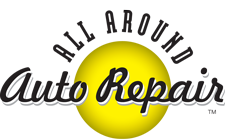All auto manufacturers recommend that vehicles be regularly maintained so vehicles operate at optimal efficiency and to expand the durability according to manufactured specifications. Extremes in climate and temperatures play havoc with vehicles and can add wear and tear prematurely. To avoid this, plan several weeks in advance of temperature changes for vehicle maintenance. This especially important for vehicles that average more than 3,000 miles of travel use per month. Several vehicle maintenance tips for the Summer include:
. Check the condition of the cooling system
. Check the condition and level of the engine’s coolant
. Check the levels of windshield wiper/washer fluids and operation
. Visually inspect drive belts, radiator hoses, p.c.v. valve
. Visually test exterior of battery and terminals
. Visually inspect exhaust system, engine and transmission for leaks
. Check brake fluid level and condition of front and rear brakes
. Visually inspect tires for signs of wear and general condition, including inflation pressure
. Check levels of power steering and differential fluids
More Vehicle Maintenance Tips for Summer
Higher summer temperatures tend to cause greater evaporation of vehicle fluids. Today’s vehicles are equipped with monitoring systems. However, these are not foolproof. For example, vehicles equipped with tire pressure monitoring systems (TPMS) can malfunction. For long distance driving, this type of malfunction can result in low tire pressure due to a tire puncture. If the monitoring system light doesn’t alert the vehicle owner as tire pressure decreases, the tire may go flat quickly or a blowout can occur.
All Around Auto Repair recommends summer maintenance even for vehicle driven short distances. Very often, these vehicles endure traffic congestion in cities and tourist towns. Vehicle engines under these conditions usually require mid-summer maintenance due to the “stop” and “go” road conditions.
Don’t Forget to Check the Oil
Most auto manufacturers recommend oil changes every 5,000 miles on newer vehicles. This assumes that the 5,000 miles will accrue over a three to four month normal period of vehicle use. Before planning a long distance trip, consider having your auto repair professional provide an oil change. Today’s newer vehicles are manufactured to require tune ups at 80,000 to 100,000 miles. If your vehicle has neared these mileage levels, it may also be a good idea to plan a vehicle tune up.
Replace Tires
It is always a good idea to replace tires when they become visibly worn. We know that driving on worn tires can cause more costly damage to the vehicle’s operating system. Keeping tires in good condition helps to save on fuel and also prevents wear and tear on the vehicle’s brake system. In summer, tires tend to expand due to higher temperatures. It’s a good idea to have your tires properly inspected to ensure the tire pressure on all four tires is well balanced. In summer, if you notice front or rear tires that seem to be “low” on air pressure, this may be a sign of heat expansion. We can adjust them to the manufacturer’s recommended pressure level.
Brakes May Need Adjusting or Repair
When driving on busy roads in summer, “riding the brakes” may reduce the effectiveness of the vehicle’s brakes very quickly. Have the auto repair expert check brake fluid and the brake system. They may need adjusting or repair.
Safety First and a Safe Summer
By following vehicle maintenance tips for summer, vehicle owners not preserve and extend the life of their vehicle. There’s a certain sense of assurance and confidence when vehicle owners know their vehicle is properly maintained. Contact us on how you can get started.
Latest Summer Vehicle Maintenance Tips
As temperatures rise, ensuring your vehicle is in top shape becomes crucial. Extreme heat can accelerate wear and tear, making regular maintenance vital for optimal performance. Here are some additional summer vehicle maintenance tips to keep your car running smoothly:
Monitor Tire Pressure Regularly:
Higher temperatures can cause tire pressure to fluctuate. Regularly check tire pressure to prevent blowouts, especially during long-distance travel. Ensure all tires are properly inflated to the manufacturer’s recommended levels.
Check Brake System:
With increased traffic and frequent braking in summer, it’s essential to inspect the brake system for any signs of wear or damage. Addressing brake issues promptly can prevent accidents and ensure safe driving.
Oil Change:
Schedule an oil change before embarking on any long-distance trips. Fresh oil helps lubricate engine components, reducing friction and extending engine life. Follow your vehicle manufacturer’s recommendations for oil change intervals.
Replace Worn Tires:
Worn tires can compromise vehicle safety and performance. Replace tires that show signs of wear, such as uneven tread wear or visible damage. Properly inflated tires improve fuel efficiency and enhance braking performance.
Plan Mid-Summer Maintenance:
Even for vehicles driven short distances, mid-summer maintenance is essential, especially in congested urban areas. Stop-and-go traffic can strain the engine, necessitating timely maintenance to prevent breakdowns.
Importance of Summer Maintenance:
By adhering to summer maintenance tips, vehicle owners not only ensure their safety but also extend the lifespan of their vehicles. Regular maintenance instills confidence and peace of mind, knowing your vehicle is well-prepared for summer journeys.
For expert assistance with your summer vehicle maintenance needs, don’t hesitate to reach out to us at All Around Auto Repair. Our team of professionals is here to help you keep your vehicle in top condition for a safe and enjoyable summer driving experience.




